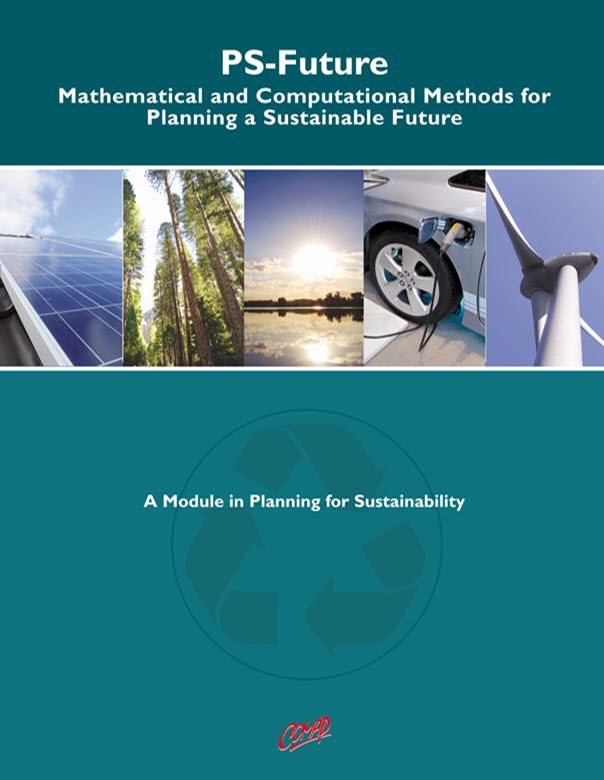Weather Generators (Student)
Author: Paul Kehle and Deepak Mishra
About This Module:
This module is written to be taught in roughly one week to one and one-half weeks of class time, and it is separated into six lessons of approximately 55 minutes each. Lessons can be combined to accommodate a block schedule or lengthened to provide class time for homework assignments. Lessons are intended to be introductory enough to be accessible to 9th-grade students with little to no dataanalysis experience, but they have also shown useful for 11th and 12 th grade college-bound students.
In what types of classes could this module be used?
This module is suitable for students in Earth Science, Environmental Science, and Biology, and it fits well as an application problem after learning the water cycle. The module is also suitable in statistics classes where the focus is on data analysis when summary statistics such as the mean and standard deviation are not the most appropriate summary statistics for the data set. Teachers may wish to reduce or eliminate either Lesson 1 (introduction to the water cycle) or Lesson 2 (introduction to basic statistics), depending on students’ prior scientific or statistical experience.
Prerequisite skills
• Though it will be reviewed in the first lesson, students should understand the global water cycle and how it is powered.
• Students should have a basic understanding of the uses of a spreadsheet program (such as Microsoft Excel or Google Spreadsheet) for data analysis, but skills using the spreadsheet are not necessary.
Required Materials
• Standard six-sided dice (1 per student)
• Computers with a Microsoft Excel spreadsheet for Lessons 3, 4, and 5. Other spreadsheet programs may work if they are macros-enabled.
• The weather generator spreadsheet file, available for download in MS Excel format.
• A method to watch online animations and videos as a class, such as a computer and projector.
Optional Materials
• Copies for students are available in two formats:
o An entire Student Workbook that includes places for students to capture their notes and thinking during class, as well as the homework worksheets. Students may use this as a reference as they work through the module.
o Individual handouts for each lesson. These worksheets are shorter and do not provide as much information or note-taking space as the Student Workbook. These may be provided as tools to offer structure during class and homework and may not be necessary for all classrooms. Teachers use discretion in determining which format, if any, is needed for their group of students.
Summary of Lessons
Lesson 1: Students review the water cycle. Then students work toward understanding the concept of worldwide sustainability and how that relates to the water cycle. Students learn about our current unsustainable patterns of water use.
Lesson 2: Students learn simple statistics, including basic vs. conditional probability, as well as practicing when to apply different mathematical routines based on the situation. Students then relate those concepts to weather.
Lesson 3: Students work to understand statistical persistence, create a flowchart for weather-based statistical persistence, and then use dice to simulate data.
Lesson 4: Students use a spreadsheet program to produce precipitation data. Students relate the computations the spreadsheet program performs to the dice lesson the day before. Students work to understand that typical summary statistics are inappropriate for this data set, and they determine appropriate and relevant methods to summarize the data.
Lesson 5: Students work to understand the difference between natural variability and variability that is the result of hidden, and possibly problematic, variables. Students use the weather generator again to examine and summarize variability that is natural.
Lesson 6: Students use the weather generator again to predict what the future holds. Using output from NCAR models to seed their own weather generator models, students examine data and work to determine how future weather patterns might be different from current patterns. Finally, the module ends with students acknowledging the merits and limitations of building models.
About the PS-Future project and its modules
The PS-Future project is a collaboration led by Rutgers University involving the Center for Discrete Mathematics and Theoretical Computer Science (DIMACS), the School of Environmental and Biological Sciences, and Heldrich Center for Workforce Development at Rutgers University; the Consortium for Mathematics and its Applications (COMAP); Colorado State University; the Groton School; Hobart and William Smith Colleges; and a number of authors and educators from around the country.
The modules are intended to provide 4-6 days of classroom activities on a variety of topics that apply computational and mathematical methods in sustainability. Each module links to Common Core State Standards (CCSS) in Mathematics and targets content for a particular mathematics course. Each module also addresses disciplinary core concepts required by the Next Generation Science Standards (NGSS), especially targeting concepts taught in Environmental Science and Biology courses. The modules are also particularly suited to address Practice Standards for both mathematics and science.
Each module contains examples of jobs related to the module topic, together with a discussion of the skills and training required, as well as information on the salary and future demand for such jobs. In many cases, specific job titles are mentioned within the modules.

Mathematics Topics:
Application Areas:
Prerequisites:
You must have one of our Free Memberships or a paid Full Membership to download this resource.
If you're already a member, login here.